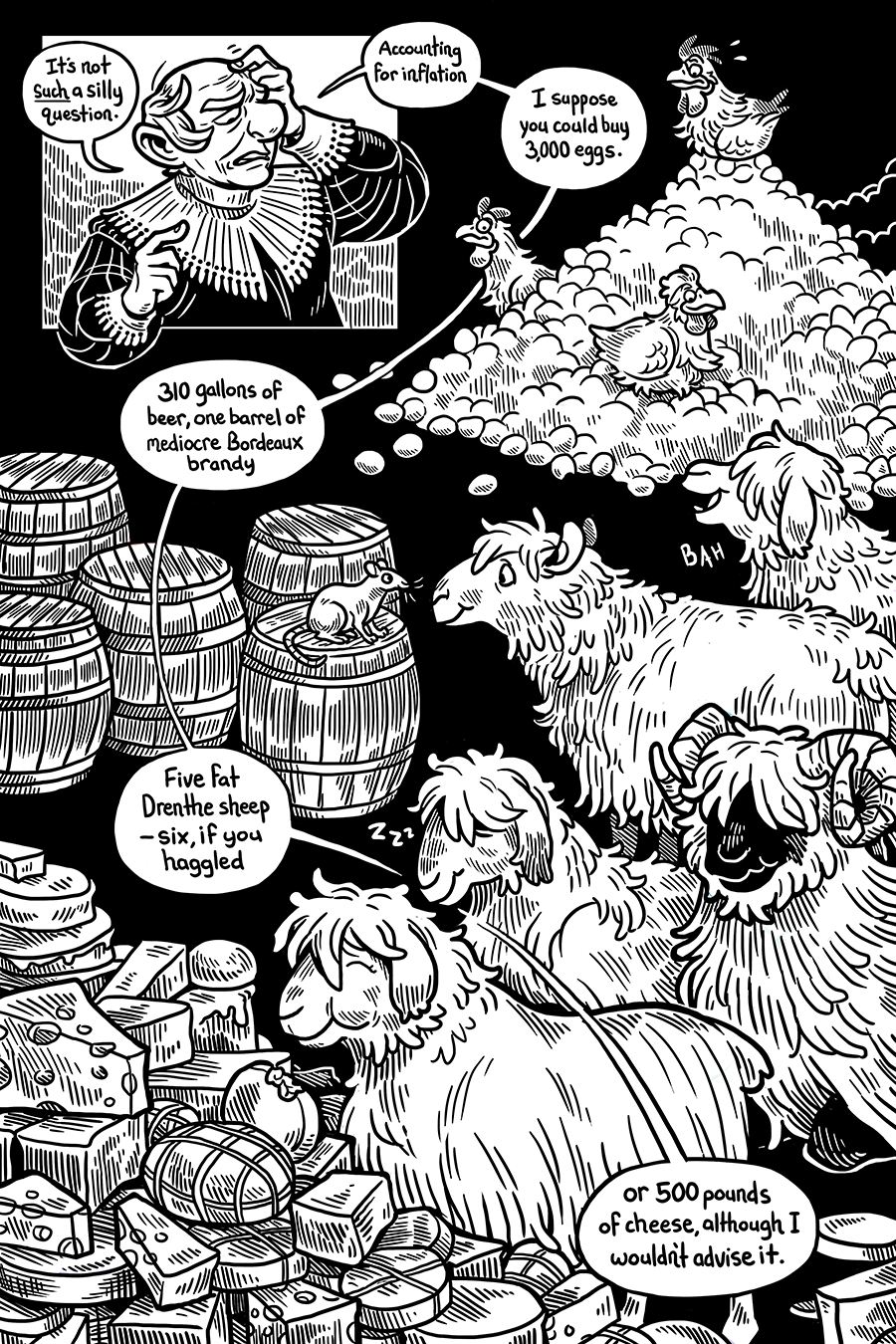
A few fun-facts to go along with this week's update:
In 1636, a guilder was worth approximately $60 USD, so 60 guilders represents about $3,600. This doesn't seem like a massive amount of money from where we're sitting in 2020, but consider that a master carpenter in the 1630s (a solid, dependable job) would have earned about 9 guilders a week.
Based on Basil's answer to Ludwig's question, we can safely assume that Clare Ontdeckingh der Dwaesheydt, a pamphlet published in 1636, would've been in his preparatory reading materials for their current assignment. This pamphlet provides an eclectic collection of items that could be purchased for 3,000 guilders, to include:
- Four fat oxen
- Eight fat pigs
- Two lasts* of wheat
- Four lasts* of rye
- Two hogsheads of wine
- Two tuns* of butter
- A thousand pounds of cheese
- A "bed with fine furnishings"
- A suit of clothes
- a silver beaker
- ...A 500 florin fee to transport this stuff to the port of your choosing by ship
However, this pamphlet doesn't provide the relative values of these items, so it's also safe to assume that Basil did some additional research. Reconstructing his devious methods, it's likely that he found some itemized lists of living expenses...say, for a pastor's household in Amsterdam in 1630. And maybe a wine merchant's shipping receipt that includes the prices of booze by volume? Hell's records aren't very systematic.
Based on these records, Basil was able to estimate the cost of a sheep at 10-ish guilders in 1636, and the price of eggs at 50 per guilder. Alternatively, you could drop the whole 60 guilders on 311 gallons of beer.
How did he get these figures off the top of his head? He's just very good at math.
*tun = an outdated unit of measure equal to 41.5 gallons
*last = an outdated unit of measure, about 25 sacks of wheat (but the volume of a sack in 1636? unclear!)



